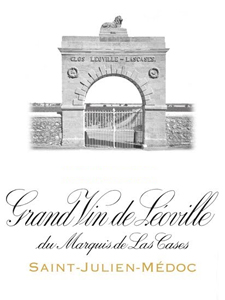| Region | |
|---|---|
| Subregion | France > Bordeaux > Left Bank > St Julien |
| Colour | Red |
| Type | Still |

As one might expect, this is a brilliant wine, but it remains shockingly young, even for the fast evolving 1990s. Its deep ruby/purple color is accompanied by a classic, nearly restrained set of aromatics that includes notions of sweet black cherries, black currants, lead pencil, and wet stones. In the mouth, it is full-bodied, and while technically low in acidity, there is a freshness, delineation, and classicism in this full-throttle, rich, concentrated, impeccable 1990. While still youthful, it is easy to appreciate despite its substantial tannins. It is not quite as backward as the 1990 Lafite Rothschild or 1990 Latour. Anticipated maturity: now-2035.
A little less vibrant in colour than the 1982, this is closer to tawny than rose, with welcoming soot and hearth smoke on the nose, and on the first palate. The fruit is plum and loganberry, softened and atumnal, with dark spice - the Petit Verdot is making its presence felt in those early years, marking it out from the post 2005 years when this grape no longer appears. Elegant and precise, with fine tannins, softens on the finish, this is in its drinking window, revs up halfway through and again has the precise elegance that makes it so much St Julien once in its mature phase. Great, but not as good as the 1982. 50% new oak. Michel Delon owner.
My notes on the 1989 and 1990 wines have been consistent over the last three years. The 1989 continues to lose ground, although it is obviously an outstanding wine, while the 1990 continues to escalate in quality. The 1990 continues to put on weight and richness, and it now clearly appears to be the superior vintage for Leoville-Las-Cases. The 1990 reveals a dense, dark purple color, followed by a sweet, pure nose of black fruits, minerals, lead pencil, and vanillin. Broad, expansive flavors come across as rich, pure, and concentrated, but never heavy or coarse. Beautifully integrated tannin and acidity are barely noticeable in this classic, full-bodied, velvety-textured, youthful yet exceptional St.-Julien. The 1990 is more fun to taste than the 1989, but readers should not interpret that comment to suggest it is ready to drink. This wine needs another 5-6 years of cellaring, after which it should last for 20-25 years.
I am now convinced that the 1990 Leoville-Las Cases is superior to the 1989. It has put on more weight and is developing the thick opulence possessed by the 1982. The wine is full-bodied, with a fabulous, cedary, black currant and vanilla-scented nose, and sweet, expansive flavors. With sensational purity and delineation, the 1990 gets my nod as one of the three greatest Leoville-Las Cases made in the post-World War II era. Although it surpasses the 1989, it is not yet at the level of the 1986 or 1982. It should prove to be timeless in its evolution and development. Lovers of young, rich, exuberant, pure wines can drink it now, but it will not hit its plateau of maturity for another decade.